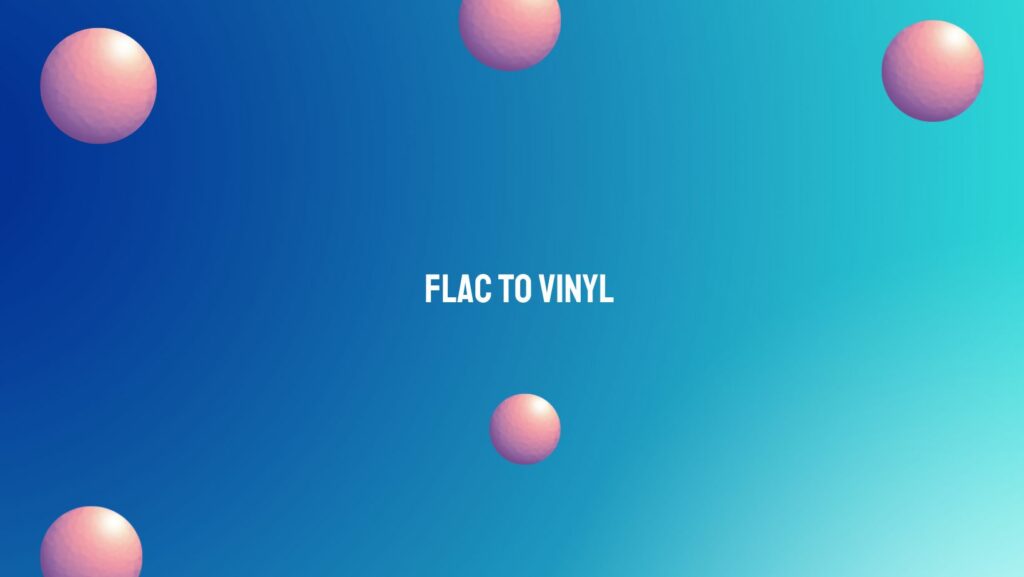In the realm of audio, the convergence of digital precision and analog warmth has given rise to an intriguing journey—transforming FLAC (Free Lossless Audio Codec) files into the timeless allure of vinyl records. This process transcends the boundaries of technology, bringing together the pristine quality of lossless digital audio and the nostalgic charm of analog playback. In this article, we delve into the intricate journey of converting FLAC to vinyl, exploring the motivations behind this transition and the unique characteristics that emerge in the marriage of these two distinct audio formats.
Preserving Digital Fidelity in FLAC:
FLAC, known for its lossless compression, preserves the original audio quality without any loss of data. This format captures the intricacies of a recording with utmost precision, making it a favorite among audiophiles who demand the highest level of fidelity. From studio-quality recordings to high-resolution audio, FLAC files serve as a digital repository for audio perfection, allowing listeners to experience the music as it was intended by the artists.
The Vinyl Renaissance:
In an era dominated by digital streaming and convenience, vinyl records have experienced a renaissance that transcends mere nostalgia. Audiophiles and music enthusiasts alike are drawn to the warmth, richness, and unique character of analog playback. Vinyl records introduce imperfections and nuances into the audio, creating an immersive and organic listening experience that goes beyond the clinical precision of digital formats. The tactile ritual of placing a needle on a spinning record adds an element of connection to the music that resonates deeply with vinyl enthusiasts.
The Transformation Process: FLAC to Vinyl:
The journey from FLAC to vinyl involves a meticulous process that bridges the gap between the digital and analog realms. Here are the key steps involved in this transformation:
- Mastering for Vinyl: The process begins with mastering the audio specifically for vinyl. Engineers adjust the dynamic range, account for the limitations of vinyl playback, and optimize the audio for the unique characteristics of analog reproduction.
- Cutting the Lacquer: The mastered audio is then translated onto a lacquer disc using a cutting lathe. The grooves carved into the lacquer represent the analog waveform of the music, ready for the vinyl pressing stage.
- Vinyl Pressing: The lacquer is used to create a metal stamper, which is then employed in the vinyl pressing process. Vinyl pellets are melted and pressed into the shape of a record, creating a physical embodiment of the original digital audio.
- Quality Control: Rigorous quality control measures are implemented to ensure that each vinyl record meets the desired audio standards. This includes checking for surface noise, warping, and other potential imperfections.
- Packaging and Artwork: Vinyl records are not just about the music; they are also a visual and tactile experience. Artwork, liner notes, and packaging play a crucial role in enhancing the overall aesthetic appeal of the vinyl album.
The Sonic Alchemy: FLAC Meets Vinyl:
The transition from FLAC to vinyl brings forth a sonic alchemy that combines the precision of digital with the warmth of analog. While FLAC captures every detail of the recording, vinyl introduces a certain magic—a softening of edges, a subtle compression, and a unique coloration that resonates with listeners on a profound level. The vinyl experience becomes not just about the sound but the ritualistic engagement with the music.
Conclusion:
In the marriage of FLAC to vinyl, we witness the harmonious coexistence of two seemingly divergent audio worlds. The journey from digital precision to analog warmth encapsulates the essence of the audiophile’s quest—to appreciate music in its purest form while embracing the nostalgic and tactile elements that make the vinyl experience so special. Whether driven by a love for the ritualistic nature of vinyl playback, the unique sonic characteristics it imparts, or the sheer joy of collecting tangible music artifacts, the FLAC to vinyl journey is a testament to the enduring and dynamic nature of our relationship with music.


